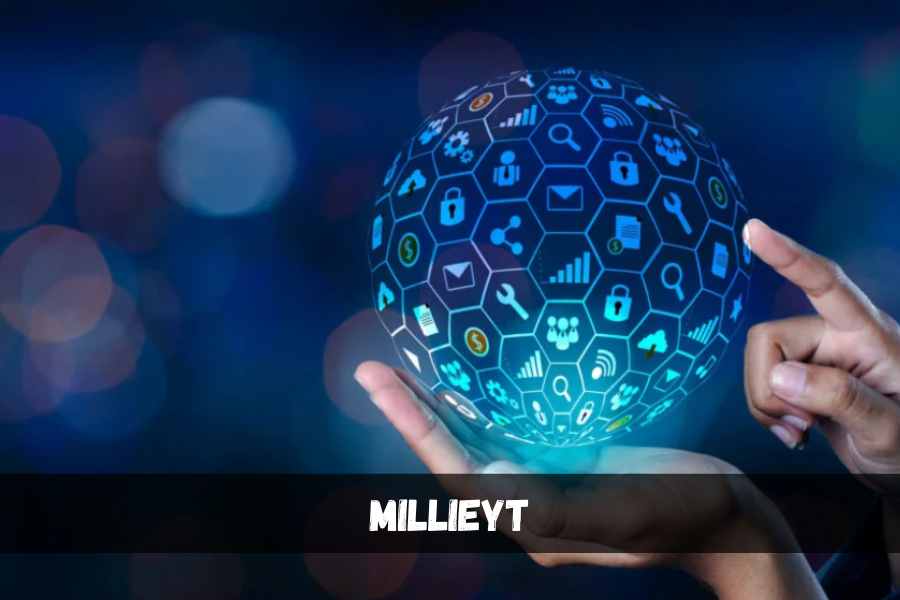The Foundations of Mıllıeyt
Mıllıeyt, derived from Turkish, translates to “nationality” or “nationhood.” It signifies a collective identity formed through shared language, culture, traditions, and values. This concept is deeply tied to the rise of nationalism and the establishment of modern nation-states, particularly during the late Ottoman period and the early years of the Turkish Republic. National identity plays a critical role in uniting diverse groups within a shared framework of belonging.
Historically, the Ottoman Empire’s multiethnic nature fostered a complex relationship with the idea of Mıllıeyt. The empire relied on a millet system, categorizing communities primarily by religion rather than ethnicity or language. This system laid the groundwork for later developments in national consciousness, particularly during the Tanzimat reform era in the 19th century, which introduced modern concepts of citizenship and equality.
The decline of the Ottoman Empire and the subsequent establishment of the Turkish Republic in 1923 marked a turning point for Mıllıeyt. Under Mustafa Kemal Atatürk’s leadership, the focus shifted toward creating a unified national identity based on shared language, secularism, and loyalty to the state. This marked the transformation of Mıllıeyt into a cornerstone of modern Turkish identity.
Mıllıeyt in Literature and Arts
Mıllıeyt has had a profound impact on literature and the arts, serving as a medium for expressing national pride, cultural values, and historical struggles. Many prominent Turkish authors, poets, and playwrights have explored themes of Mıllıeyt in their works, using storytelling as a means to preserve cultural heritage and inspire collective memory.
For instance, the late 19th and early 20th centuries saw an emergence of nationalist literature that celebrated the achievements and struggles of the Turkish people. Authors like Namık Kemal and Ziya Gökalp highlighted the importance of national unity and cultural preservation in their writings. This literary movement paralleled similar trends in other parts of the world, where national identity became a central theme in the arts.
Similarly, Turkish folk music and traditional dances have long been seen as cultural symbols embodying Mıllıeyt. These forms of art not only preserve historical traditions but also reinforce a shared sense of belonging, making them integral to national celebrations and ceremonies.
The Role of Mıllıeyt in Education
Education has been a critical tool for instilling the values of Mıllıeyt in younger generations. During the early years of the Turkish Republic, significant reforms were introduced to promote a unified national identity through the education system.
The introduction of a standardized curriculum emphasized Turkish language, history, and geography, helping to foster a shared understanding of the nation’s past and its aspirations for the future. School textbooks often highlighted the achievements of Turkish leaders and historical events that shaped the country’s identity, reinforcing the ideals of Mıllıeyt.
Even today, the concept of Mıllıeyt continues to influence educational policies in Turkey. National holidays, such as Republic Day and Victory Day, are celebrated in schools with activities that promote patriotism and national pride.
You Might Also Like: What is ChannelSynCharma? Understanding the Role of Multi-Channel Synchronization in Communication
Mıllıeyt in Political Ideologies
Mıllıeyt is deeply intertwined with political ideologies, often serving as a rallying point for national unity or as a justification for specific policies. In Turkey, nationalist movements have frequently drawn upon Mıllıeyt to advocate for policies that emphasize the preservation of cultural heritage, language, and sovereignty.
Political parties with nationalist platforms have historically used Mıllıeyt as a foundation for their ideologies. These parties often prioritize issues such as protecting the Turkish language from foreign influences, preserving cultural traditions, and maintaining the territorial integrity of the nation.
However, the concept of Mıllıeyt has not been without controversy. Critics argue that an overly rigid interpretation of Mıllıeyt can lead to exclusionary practices, marginalizing ethnic and religious minorities within the country. Striking a balance between national unity and cultural diversity remains a challenge in contemporary Turkish politics.
Social Movements and Mıllıeyt
Throughout history, Mıllıeyt has been a driving force behind social movements advocating for justice, equality, and self-determination. The concept has been used to unite communities in their struggles against oppression, colonialism, and inequality.
For example, during the early 20th century, nationalist movements in the Middle East, North Africa, and the Balkans often invoked Mıllıeyt as a means of rallying support for independence from colonial powers. These movements emphasized the shared language, culture, and history of their peoples as a basis for self-rule and national sovereignty.
Similarly, women’s rights movements in Turkey and other parts of the world have drawn upon the values of Mıllıeyt to advocate for gender equality. By framing their demands within the context of national progress and pride, these movements have successfully highlighted the importance of inclusive policies in building a stronger, more unified society.
You Might Also Like: Digital Art Ankinsart: The New Frontier in Creative Expression
Mıllıeyt in International Relations
The influence of Mıllıeyt extends beyond national borders, shaping the way countries interact with one another on the global stage. Nations with a strong sense of Mıllıeyt often use their national identity as a source of strength in diplomatic negotiations, trade agreements, and cultural exchanges.
For example, Turkey’s foreign policy has frequently emphasized the importance of preserving its national sovereignty and cultural heritage in the face of globalization. This approach has shaped the country’s relationships with regional and global powers, influencing its role in organizations such as NATO and the United Nations.
At the same time, Mıllıeyt has occasionally been a source of tension in international relations, particularly when competing visions of national identity clash. Disputes over territory, language, or historical narratives often reflect deeper conflicts rooted in differing interpretations of Mıllıeyt.
Modern Challenges to Mıllıeyt
In the 21st century, globalization and technological advancements have introduced new challenges to the traditional concept of Mıllıeyt. The rise of transnational corporations, digital communication platforms, and multicultural societies has blurred the boundaries of national identity, prompting debates about the relevance of Mıllıeyt in an increasingly interconnected world.
Proponents of globalization argue that Mıllıeyt must evolve to accommodate the realities of a diverse and interconnected global society. They advocate for a more inclusive interpretation of national identity that embraces cultural diversity and fosters international cooperation.
Conversely, nationalist movements in various parts of the world have called for a reassertion of traditional values and a stronger emphasis on Mıllıeyt as a means of preserving cultural heritage and sovereignty. These movements often gain traction during periods of economic or political instability, reflecting the enduring appeal of national identity as a source of unity and strength.
Mıllıeyt and Cultural Preservation
Cultural preservation remains a central theme in discussions about Mıllıeyt. Efforts to protect endangered languages, traditional crafts, and historical landmarks are often framed within the context of maintaining a nation’s unique identity.
In Turkey, initiatives to promote Turkish language and literature have been instrumental in preserving the country’s cultural heritage. Programs supporting traditional arts, such as carpet weaving and calligraphy, highlight the importance of Mıllıeyt in sustaining cultural traditions for future generations.
Similarly, international organizations like UNESCO have recognized the significance of cultural heritage in fostering a sense of belonging and identity. By designating sites of historical and cultural importance as World Heritage Sites, these organizations contribute to the global effort to protect and celebrate the diverse expressions of Mıllıeyt.
You Might Also Like: Understanding the Indulgence Mutation x v5 Rda Replacement Ceramic Part
Conclusion
Mıllıeyt, as a concept, transcends mere definitions of nationality or nationhood. It embodies the essence of collective identity, uniting people through shared language, culture, and history. From its historical roots in the Ottoman millet system to its evolution into a cornerstone of modern Turkish identity, Mıllıeyt has played a crucial role in shaping societal values, political ideologies, and cultural expressions. As globalization and technological advancements challenge traditional boundaries, the enduring significance of Mıllıeyt lies in its adaptability—balancing national unity with cultural diversity. By preserving heritage while embracing change, societies can ensure that Mıllıeyt remains a source of strength, pride, and inspiration for generations to come.
FAQs
1. What does Mıllıeyt mean?
Mıllıeyt is a Turkish term that translates to “nationality” or “nationhood.” It represents a collective identity based on shared language, culture, traditions, and values.
2. How did the Ottoman Empire influence the concept of Mıllıeyt?
The Ottoman Empire’s millet system categorized communities by religion, laying the groundwork for modern concepts of national consciousness. The Tanzimat reform era further introduced ideas of citizenship and equality, shaping the development of Mıllıeyt.
3. How is Mıllıeyt reflected in Turkish literature and arts?
Mıllıeyt has been a central theme in Turkish literature, arts, and folk traditions, expressing national pride, cultural values, and historical struggles. Prominent figures like Namık Kemal and Ziya Gökalp explored these themes in their works.
4. What role does education play in promoting Mıllıeyt?
Education has been pivotal in fostering Mıllıeyt through standardized curricula that emphasize Turkish history, language, and culture. National holidays and activities in schools further instill patriotism and a shared sense of identity.
5. How does Mıllıeyt influence political ideologies?
Mıllıeyt often serves as a foundation for nationalist movements, emphasizing cultural preservation, language protection, and sovereignty. However, rigid interpretations can sometimes lead to controversies, such as marginalizing minorities.
6. What challenges does Mıllıeyt face in the modern world?
Globalization, technological advancements, and multicultural societies challenge traditional notions of Mıllıeyt. Debates center around adapting national identity to include diversity while maintaining cultural heritage.
7. How does Mıllıeyt contribute to cultural preservation?
Mıllıeyt plays a vital role in preserving endangered languages, traditional arts, and historical landmarks. In Turkey, initiatives supporting Turkish literature, folk music, and crafts are examples of its influence on cultural heritage.
8. Can Mıllıeyt coexist with globalization?
Yes, Mıllıeyt can evolve to coexist with globalization by embracing inclusivity while preserving cultural traditions. Striking this balance ensures that national identity remains relevant in a connected world.
Stay connected for the latest news and updates on LET MAGAZINE Best Regards!



